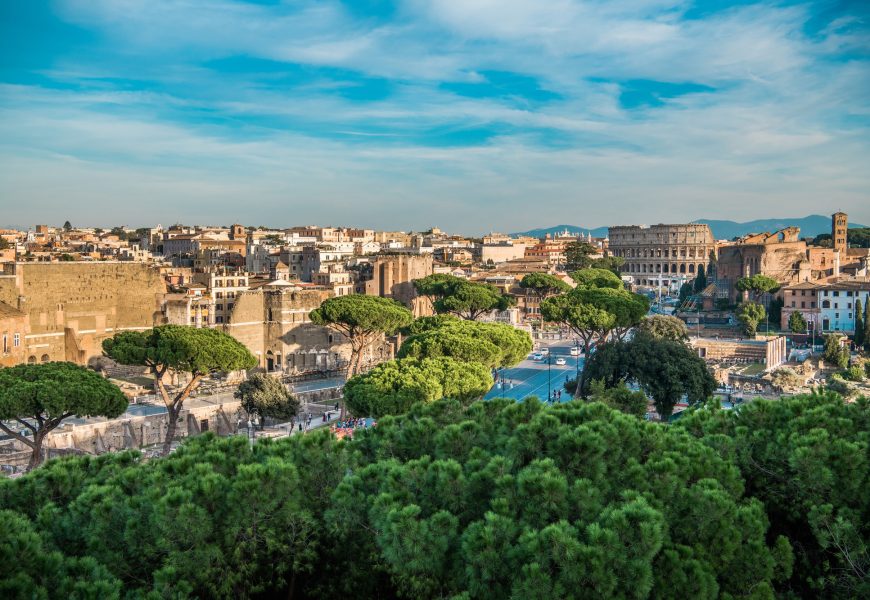Rome, the capital city of Italy, is a vibrant metropolis that seamlessly blends its rich historical heritage with a dynamic modern culture. Known as the “Eternal City,” Rome offers visitors an unparalleled journey through time, showcasing landmarks from its ancient origins to its Renaissance grandeur.
Top Attractions
Colosseum: This iconic amphitheater, dating back to 70-80 AD, once hosted gladiatorial contests and public spectacles. Today, it stands as a testament to Roman engineering and architectural prowess.
Roman Forum: Once the heart of ancient Rome, the Forum was the center of political, commercial, and judicial life. Visitors can explore the ruins of temples, basilicas, and public spaces that narrate the city’s storied past.
Pantheon: Originally built as a temple for all Roman gods around 125 AD, the Pantheon is renowned for its massive dome and oculus, exemplifying ancient Roman architectural innovation.
Vatican City: An independent city-state enclaved within Rome, it houses St. Peter’s Basilica, the Sistine Chapel adorned by Michelangelo’s frescoes, and the Vatican Museums, which boast an extensive art collection.
Trevi Fountain: This Baroque masterpiece, completed in 1762, is one of the most famous fountains in the world. Tradition holds that tossing a coin into the fountain ensures a return to Rome.
Culinary Delights
Rome’s culinary scene is a delightful reflection of its rich cultural tapestry. Traditional dishes include ‘Cacio e Pepe’ (pasta with Pecorino Romano cheese and black pepper), ‘Carbonara’ (pasta with eggs, cheese, pancetta, and pepper), and ‘Saltimbocca alla Romana’ (veal lined with prosciutto and sage). Local markets, such as Campo de’ Fiori, offer fresh produce, meats, and cheeses, providing an authentic taste of Roman life.
Best Time to Visit
The ideal periods to explore Rome are during spring (April to June) and autumn (September to October), when the weather is mild, and tourist crowds are more manageable. These seasons offer comfortable conditions for sightseeing and outdoor activities.
Getting Around
Rome’s historic center is best navigated on foot, allowing visitors to fully appreciate its narrow streets, piazzas, and architectural marvels. For longer distances, the city offers an extensive public transportation system, including buses, trams, and metro lines. Taxis and ride-sharing services are also readily available.
Day Trips
Ostia Antica: Located approximately 30 kilometers southwest of Rome, Ostia Antica is an ancient Roman harbor city that offers well-preserved ruins, providing insights into daily life during the Roman Empire.
Tivoli: Home to the magnificent Villa d’Este and Hadrian’s Villa, Tivoli showcases Renaissance gardens and ancient Roman architecture. It’s situated about 30 kilometers east of Rome and is accessible by train or bus.
Travel Tips
Dress Code: When visiting religious sites, such as St. Peter’s Basilica, ensure that shoulders and knees are covered as a sign of respect.
Safety: While Rome is generally safe, be vigilant against pickpocketing, especially in crowded tourist areas. It’s advisable to carry only essential items and use a money belt or secure bag.
Language: While Italian is the official language, English is widely understood in tourist areas. Learning a few basic Italian phrases can enhance your experience and interactions with locals.
Rome’s unparalleled blend of historical significance, artistic treasures, and vibrant street life makes it a must-visit destination. Whether you’re exploring ancient ruins, savoring Italian cuisine, or strolling through its charming neighborhoods, Rome promises an unforgettable experience.


